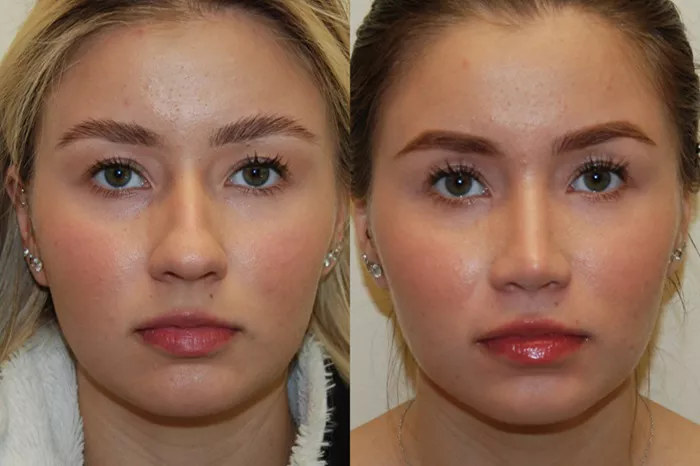Tip Plasty, a specialized form of plastic surgery, is designed to enhance and reshape the tip of the nose without altering the nasal bones. This procedure focuses solely on the cartilage framework that shapes the nasal tip, offering patients the opportunity to achieve a more harmonious facial appearance through targeted adjustments. Here, we delve into the details of Tip Plasty, exploring its surgical process, goals, benefits, and considerations for those considering this cosmetic enhancement.
Understanding Tip Plasty
Tip Plasty, also known as nasal tip surgery or tip rhinoplasty, addresses aesthetic concerns related to the shape, size, and projection of the nasal tip. Unlike traditional rhinoplasty which may involve altering the nasal bridge or overall structure of the nose, Tip Plasty concentrates exclusively on refining the lower portion of the nose. This refinement typically involves reshaping the cartilage and sometimes adjusting the nasal skin to achieve a more pleasing contour and symmetry.
Surgical Process and Goals
The primary objective of Tip Plasty is to achieve a natural-looking nasal tip that harmonizes with the rest of the face. The procedure begins with a detailed consultation where the surgeon assesses the patient’s nasal anatomy and discusses their desired outcomes. Typically performed under local or general anesthesia, the surgery involves the following steps:
Incision: Depending on the specific techniques used, incisions are made either within the nostrils (closed rhinoplasty) or across the columella (open rhinoplasty).
Cartilage Reshaping: The surgeon accesses the nasal tip cartilage through these incisions, carefully reshaping it to achieve the desired contour. This may involve trimming excess cartilage, repositioning, or adding structural support using grafts.
Skin Adjustment: In cases where the nasal tip skin needs modification, excess skin may be removed or redistributed to enhance definition and smoothness.
Closure: After the necessary modifications, the incisions are meticulously closed with sutures, and if applicable, external splints or internal packing may be applied to support the new nasal shape during initial healing.
The goals of Tip Plasty are not only to refine the appearance of the nose tip but also to maintain or improve nasal function, ensuring that breathing remains unobstructed post-surgery. Achieving a balanced, proportionate nasal tip that complements the patient’s facial features is paramount, with surgeons aiming to create results that appear natural and aesthetically pleasing.
See also: How long after rhinoplasty does the tip drop?
Benefits of Tip Plasty
1. Cosmetic Enhancement:
Tip Plasty allows individuals to achieve a variety of aesthetic improvements, including:
Reducing Nasal Tip Size: For patients seeking a more proportionate nose by decreasing the size or projection of the tip.
Refining Tip Definition: Enhancing the definition and shape of the nasal tip for a more sculpted appearance.
Correcting Asymmetry: Addressing asymmetrical nasal tips to create greater facial symmetry.
2. Functional Improvements:
Improved Nasal Airflow: In cases where nasal tip reshaping also improves the internal nasal passages, patients may experience enhanced breathing functionality.
3. Psychological Benefits:
Enhanced Self-Confidence: Many individuals report increased self-esteem and confidence following Tip Plasty, as they are satisfied with their improved facial appearance.
Considerations and Patient Satisfaction
While Tip Plasty offers numerous benefits, potential candidates should consider several factors before undergoing surgery:
Realistic Expectations: Understanding what Tip Plasty can and cannot achieve is crucial for patient satisfaction. Surgeons can provide simulations or digitally enhanced images to help patients visualize potential outcomes.
Recovery Period: Like all surgical procedures, Tip Plasty requires a recovery period during which swelling and bruising gradually subside. Patients are advised to follow post-operative care instructions meticulously to optimize healing and results.
Choosing a Qualified Surgeon: Selecting a board-certified plastic surgeon with extensive experience in nasal surgery is essential for achieving safe and satisfactory results.
Patient satisfaction rates with Tip Plasty are generally high when performed by skilled surgeons and when patients have clear communication regarding their expectations and goals. Regular follow-up appointments allow surgeons to monitor healing progress and address any concerns that may arise.
Conclusion
Tip Plasty represents a specialized approach to nasal refinement, focusing exclusively on reshaping the nasal tip to enhance facial harmony and aesthetics. By skillfully modifying the nasal cartilage and sometimes the skin, surgeons can achieve subtle yet significant improvements tailored to each patient’s unique facial features and preferences. For individuals considering cosmetic enhancement of their nasal tip, consulting with a qualified plastic surgeon can provide valuable insights into whether Tip Plasty is the appropriate option to achieve their desired goals.
In conclusion, Tip Plasty serves as a versatile tool in modern plastic surgery, offering individuals the opportunity to achieve a more balanced and aesthetically pleasing nasal tip without altering the overall nasal structure. With careful consideration of surgical goals and outcomes, Tip Plasty continues to evolve as a sought-after procedure for enhancing facial aesthetics and improving self-confidence.
Related topics:
Is tip plasty cheaper than rhinoplasty?
How much is a tip plasty: Everything You Need To Know
How long does tip plasty take to heal?


